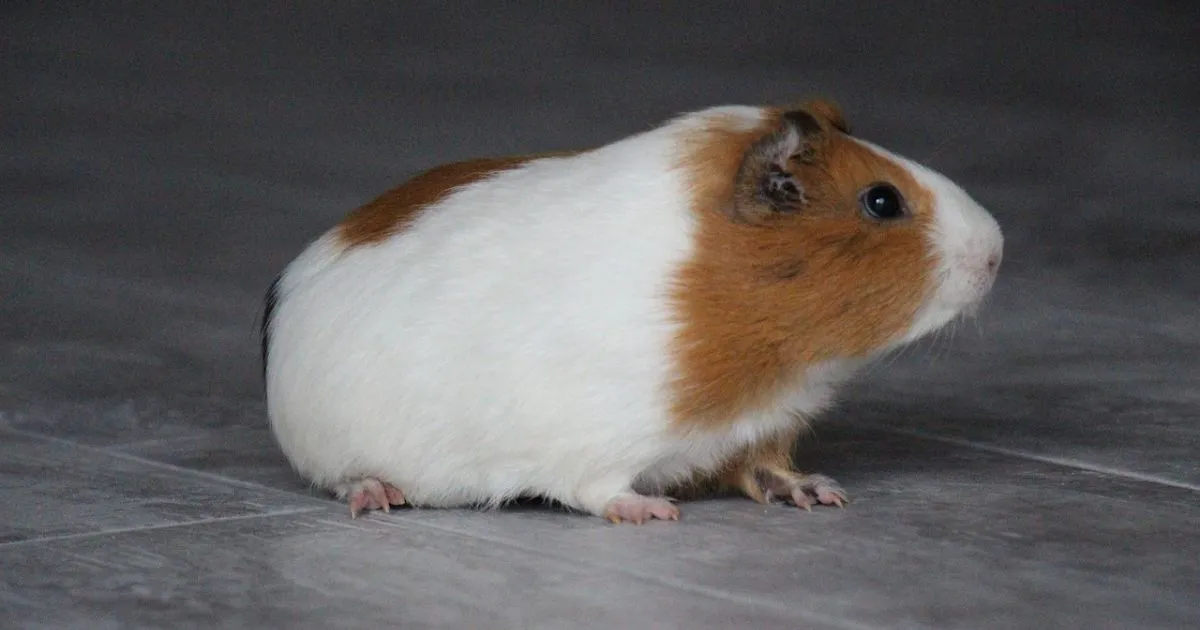Best Hamster Care Guide: Boost Your Hamster’s Lifespan
Table of Contents
Best Hamster Care Guide
Bringing a hamster home is an exciting adventure! Knowing the average hamster lifespan helps you give the best care. These tiny friends usually live between 1.5 to 3 years. But, with the right care, you can make their life longer.
Good nutrition, a nice habitat, and careful attention are key to your hamster’s health. Even though their life span is short, every moment can be filled with joy. By understanding their needs, you can make their life better.
This guide will show you how to make your hamster’s life better. You’ll learn about the right diet and how to create a fun environment. You’ll discover expert tips to help your hamster live a long and happy life.
Understanding Different Hamster Breeds and Their Lifespans
Choosing the right hamster breed is key to your pet’s long life. Each hamster species has its own traits that affect their lifespan and care needs. Knowing these differences helps you give your furry friend the best care.
Hamster breeds vary in how long they live. Some live shorter lives, while others can live longer than expected. Let’s look at the most common hamster breeds and their lifespans.
Syrian Hamsters: The Gentle Giants
Syrian hamsters usually live 2-3 years. They are the biggest hamster breed and great for beginners. Their size makes their care a bit easier than smaller breeds.
- Average lifespan: 2-3 years
- Size: Largest hamster breed
- Recommended for: Beginners and families
Roborovski Hamsters: The Longest-Living Breed
The Roborovski hamster is the longest-living hamster species. These tiny, active creatures can live up to 3-4 years with good care.
Dwarf Campbell’s Russian Hamsters
Dwarf hamsters live about 1.5-2 years. These small, social hamsters need special care to live longer.
| Hamster Breed | Average Lifespan | Unique Characteristics |
|---|---|---|
| Syrian Hamsters | 2-3 years | Largest breed, solitary |
| Roborovski Hamsters | 3-4 years | Smallest, most active |
| Dwarf Campbell’s Russian | 1.5-2 years | Social, smaller size |
| Chinese Hamsters | 2-3 years | Slender, mouse-like appearance |
Chinese Hamsters: The Unique Breed
Chinese hamsters have a lifespan of 2-3 years. Their unique look makes them stand out from other hamster breeds.
“Understanding your hamster’s breed is the first step to providing optimal care and maximizing their potential lifespan.” – Veterinary Hamster Experts
Creating the Perfect Habitat for Your Hamster
Creating a great home for your hamster is key to their happiness and health. A well-designed habitat can make your hamster’s life better and reduce stress. It’s one of the most vital hamster care tips for owners.
Cage Size Requirements
Hamsters need lots of space to be happy. Experts say a cage should be at least 450 square inches and 24 inches tall. They need room to play, burrow, and explore. Small cages can cause stress, less activity, and behavioral issues.
Bedding Options and Safety
Choosing the right bedding is important for hamsters. Pick safe, absorbent materials that let them burrow naturally. Good options include:
- Paper-based bedding
- Aspen wood shavings
- Cellulose-based materials
Stay away from cedar or pine shavings, as they can harm their breathing.
Essential Cage Accessories
Your hamster’s home should have important accessories for their mind and body:
- Exercise wheel
- Hiding spots
- Chew toys
- Water bottle
- Food dish
These items keep your hamster busy and happy, making their home both comfy and fun.
Average Hamster Lifespan and Health Factors
Knowing how long a hamster lives is key to caring for them well. Most hamsters live for 2 to 3 years. But, their health can be affected by several important factors.
Genetics play a big role in how long a hamster lives. Different breeds live longer or shorter lives. Taking good care of your hamster can help them live longer.
- Genetics influence overall hamster health and longevity
- Diet quality directly impacts lifespan
- Environmental conditions are critical for survival
- Regular veterinary check-ups can extend life expectancy
Your hamster’s diet is very important for their health. A balanced diet and avoiding bad foods can help them live longer.
| Hamster Health Factor | Impact on Lifespan | Recommended Action |
|---|---|---|
| Nutrition | High Impact | Balanced diet, limited treats |
| Exercise | Moderate Impact | Daily wheel time, play area |
| Stress Levels | Significant Impact | Quiet environment, minimal handling |
| Veterinary Care | Critical Impact | Annual check-ups, prompt treatment |
Environmental factors like temperature, humidity, and living conditions matter a lot. Keeping their home clean and comfy is vital for their health.
Going to the vet regularly can catch health problems early. This can help your hamster live longer. By focusing on these health factors, you can give your hamster the best care.
Nutrition Requirements for a Longer Life
Caring for hamsters starts with knowing their special diet needs. A balanced diet is key to keeping your pet healthy and long-lived. It boosts their immune system, energy, and overall health.
Commercial Foods and Pellets
Choosing the right commercial food is vital for a healthy hamster diet. Opt for high-quality pellets made for hamsters. They should have:
- Protein-rich formulas (16-20% protein content)
- Balanced mix of seeds and grains
- Fortified with vitamins and minerals
Safe Fresh Foods and Treats
Add fresh foods to your hamster’s diet for variety and extra nutrients. Some safe choices are:
- Vegetables: Carrots, cucumber, broccoli
- Fruits: Small amounts of apple, pear (no seeds)
- Occasional protein sources like mealworms
Foods to Avoid
When caring for hamsters, watch out for dangerous foods. Avoid:
- Chocolate and caffeine
- Citrus fruits
- Onions and garlic
- Almonds and large nuts
Treats should not be more than 10% of your hamster’s diet. Always introduce new foods slowly and in small amounts to avoid digestive problems.
Exercise and Enrichment Activities
Keeping your hamster active and mentally sharp is key for a long life. These tiny animals need regular exercise to stay healthy and happy. Learning good hamster care tips can help you make a fun environment for your pet.
Exercise wheels are vital for hamster fitness. Pick a solid-surface wheel to avoid leg injuries. Wheel size matters – Syrian hamsters need bigger wheels than dwarf breeds. Look for a wheel at least 8 inches for Syrian hamsters and 6.5 inches for smaller ones.
- Provide multiple types of toys for mental stimulation
- Rotate toys weekly to prevent boredom
- Create DIY obstacle courses using cardboard tubes
- Use puzzle feeders to challenge their problem-solving skills
Playing with your hamster outside the cage can greatly improve their life. Use a safe, enclosed area for them to explore. Hamster care tips suggest keeping outside-cage time to 15-20 minutes to avoid tiredness.
“A stimulated hamster is a healthy hamster” – Veterinary Experts
Here are some fun activities to help your hamster live longer:
- Hide treats in different cage locations
- Provide chew toys for dental health
- Create climbing opportunities with safe structures
- Use tunnels and hiding spaces for natural behaviors
Consistent, gentle interaction and varied activities can make your hamster’s life longer. They will stay happy and engaged.
Maintaining Proper Hygiene and Cleanliness
Caring for hamsters means keeping their living space clean. A clean home is key to their health. It stops diseases and keeps them feeling good.
Regular cleaning fights off bad bacteria. It also lowers the chance of breathing problems and other sicknesses.
Daily Cleaning Tasks
Start with daily care to keep your hamster healthy. Your daily routine should include:
- Remove soiled bedding and droppings
- Refresh water bottle
- Check food dishes for cleanliness
- Spot clean wet or dirty areas
Weekly Maintenance Schedule
For a cleaner home, do these weekly tasks:
- Replace about 1/3 of the bedding
- Wipe down cage accessories
- Clean water bottle and food dishes
- Inspect toys for wear and tear
Monthly Deep Clean Protocol
Deep cleaning is vital for your hamster’s health. Here’s what to do monthly:
| Cleaning Area | Action | Purpose |
|---|---|---|
| Entire Cage | Complete disinfection | Eliminate bacteria |
| All Accessories | Thorough washing | Remove hidden germs |
| Bedding | Full replacement | Prevent mold growth |
Pro tip: Always use hamster-safe cleaning products to protect your pet’s sensitive respiratory system.
Common Health Issues and Prevention
Keeping your hamster healthy is key to a longer life. Quick action and early detection can stop serious problems. This helps your furry friend live a longer life.
Hamster health needs close watching for medical issues. Some common problems include:
- Wet Tail: A severe digestive condition causing diarrhea and dehydration
- Respiratory infections that can quickly become serious
- Dental problems affecting eating and overall wellness
Spotting early signs is vital for your hamster’s health. Look out for these important symptoms:
- Unusual lethargy or decreased activity
- Changes in appetite or water consumption
- Visible weight loss
- Discharge from eyes or nose
“Prevention is always better than cure when it comes to small pets like hamsters.” – Veterinary Exotic Animal Care Specialists
Regular vet visits are crucial for your hamster’s health. Exotic pet vets know how to care for hamsters. They offer specific advice for their needs.
By watching for health issues, you help your hamster stay well. This can even help them live longer.
Bonding and Handling Techniques
Building a strong bond with your hamster takes patience and understanding. It’s not just about food and shelter. It’s about creating a safe and comfortable space for your tiny pet.
Building Trust
Trust is key in caring for your hamster. Begin by letting your hamster get used to your presence without touching them. Here are some important tips:
- Sit near the cage and speak softly
- Avoid sudden movements
- Let your hamster approach you voluntarily
- Use treats to create positive associations
Safe Handling Methods
When you’re ready to handle your hamster, follow these important steps:
- Wash your hands before interactions
- Move slowly and gently
- Cup your hands to create a secure environment
- Support the hamster’s entire body
- Keep handling sessions short initially
Stress Prevention Tips
Reducing stress is vital in hamster care. Pay attention to your hamster’s body language and respect their space. Never force interaction if your pet seems anxious or withdrawn. Keep their environment calm with minimal noise and sudden changes.
Remember: Every hamster has a unique personality, and building trust takes time and patience.
Temperature and Environmental Controls
Creating the right environment is key for your hamster’s long life. Their comfort depends on the right temperature and habitat. Hamsters are sensitive and need specific conditions to stay healthy.
The best temperature for hamsters is between 65-75°F (18-24°C). Too hot or too cold can be dangerous. Sudden temperature changes can cause stress and shorten their life.
- Keep hamster habitats away from direct sunlight
- Avoid placing cages near air conditioning vents or drafty windows
- Maintain consistent room temperature
- Use a room thermometer to monitor environmental conditions
Humidity is also important. Hamsters like a moderate humidity, around 40-60%. Too dry or too humid can cause health problems.
“A stable environment is the foundation of a healthy hamster’s life.”
Lighting is crucial too. Hamsters are nocturnal and need a light-dark cycle. Give them a quiet, dim area during the day and a dark space for sleep.
- Use soft, indirect lighting
- Maintain a consistent 12-hour day/night cycle
- Avoid bright, harsh lights near the hamster’s habitat
By controlling temperature, humidity, and lighting, you can help your hamster stay healthy. This can even help them live longer.
Conclusion
Knowing how long hamsters live is key to giving them the best life. By following the tips in this guide, you can make your hamster’s life better and maybe even longer than usual.
Every detail of care is important. This includes making a great home, feeding them right, and keeping things clean. Paying close attention to your hamster’s health and happiness can stop problems before they start. Remember, every hamster is different, so their needs can change based on their breed and health.
Your love and effort in caring for your hamster will greatly improve their life. By giving them a safe place, healthy food, lots of play, and gentle touch, you’ll help them live their best life. With the right care, your hamster can have a happy and fulfilling life.
Enjoy the time you spend with your hamster by being patient, loving, and informed. Taking good care of them will make them a happy and healthy pet. They will bring joy and friendship to your home.







